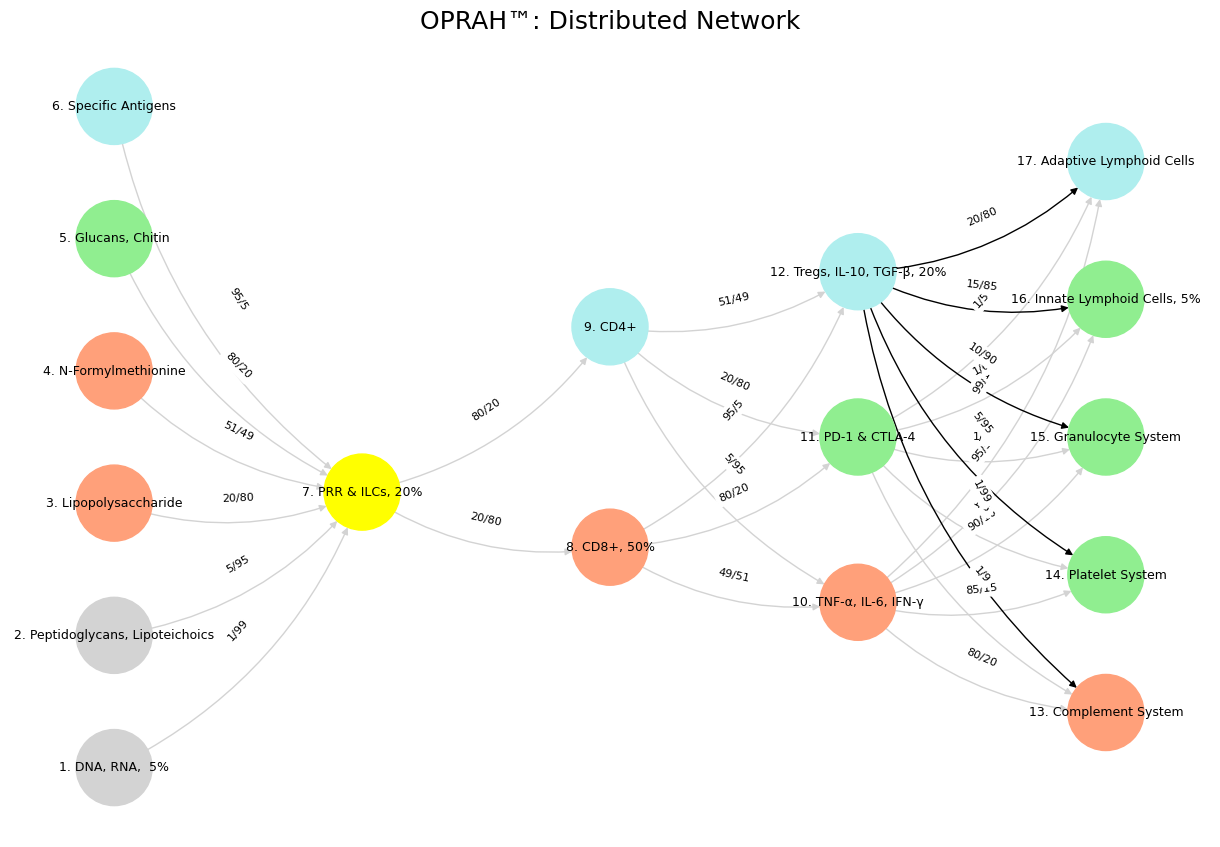Born to Etiquette#
Purpose falls like a seed, not rises like a throne. The sacred enters not by climbing up, but by descending down. ✨🌏🧬🌧️☀️🤖 — this is the first spark, the divine idea before it hardens into story, structure, or skin. It’s not a crown; it’s a concentrated signal, an intent whispered from somewhere outside time. TD Jakes names it raw: you, from crimes. It’s not theology; it’s thunder. It’s what Paul holds in prison when he writes Ephesians—not a doctrine, but a download. This is where art enchants, where metaphysics breathes, where DNA itself might be script written by starlight. It has to fall, to germinate.
He Does it Again. If we can send AIs to visit other planets and perhaps galaxies, surely aliens coud do the same and visit us. Thus UFOs are not that much of a stretch, especially in a nuclear world -- aliens have recognized the "arrival" of another intelligence that has learned to harness the energy of the stars. We must overcome biological imperatives: status, tribe, etc. It's clear that AI is one such approach. Matrix.
👁️ is where it begins to take shape. Attention is gravity. To see is to select. This is the realm of filters, enchantments, spells of focus or distraction. Witchcraft isn’t cauldrons—it’s manipulation of meaning through sight. Paul doesn’t just teach; he prays that your eyes be opened. Because what you see becomes what you build. Prospero’s magic operates on the same principle—illusion as infrastructure.
Then 👅🧠, where taste meets interpretation. The tongue, that ancient test site of trust and poison. The brain, ever balancing instinct with instruction. This is where choices simmer—how do you know what is good? What is godly? Prayer, here, isn’t just petition—it’s relief from decision fatigue. It’s a ritual to shift burden from cortex to cosmos. Rick Warren and Jakes may not agree on everything, but here they rhyme: the mind alone is too thin a reed to lean on. Taste must be trained by something higher.
💪🏾⚖️📖 follows, where thought becomes structure. Spirit enforces, yes—but with muscle and meaning. Here we get justice, contracts, stories that outlast empires. The dreamer (Joseph) becomes the architect of survival. Israel doesn’t just escape Egypt—they restructure around law, narrative, ritual. Power is always being negotiated here. The muscle layer doesn’t just carry purpose—it enacts it.
And at the base: ⚽️🏃🏾🏡🛌🏝️ — the blessed grind. Running, returning, resting. The body moves, aches, remembers. This is exile and routine, the sacred in sweat. Joseph still had to walk stairs. Prospero still had to sleep. Even Shakespeare had to go home—to the second-best bed. Purpose, fully incarnated, is unremarkable to the untrained eye. But to those who trace the whole descent—it’s revelation.
Speaking the truth in love, we are to grow up in every way into him who is the head, into Christ
— Ephesians 4:15
So no, not a crown. Not an ascent. But a falling tree of fire, its roots tangled in heaven, its branches blossoming into our limbs. Mystery lands here. Right here. In bed, on fields, at home.
“Tossed to and fro by the waves.” That’s how Paul describes the unmoored life. Not evil. Not heretical. Just adrift. The condition of being doctrine-less isn’t depravity—it’s disorientation. The soul becomes a skiff, spinning in crosswinds of opinion, ideology, inherited trauma, spiritual trend. This isn’t a theological warning—it’s a meteorological one. The skies are unstable. And the sea, without a keel of truth, becomes your captor.
Show code cell source
import numpy as np
import matplotlib.pyplot as plt
import networkx as nx
# Define the neural network layers
def define_layers():
return {
'Suis': ['DNA, RNA, 5%', 'Peptidoglycans, Lipoteichoics', 'Lipopolysaccharide', 'N-Formylmethionine', "Glucans, Chitin", 'Specific Antigens'],
'Voir': ['PRR & ILCs, 20%'],
'Choisis': ['CD8+, 50%', 'CD4+'],
'Deviens': ['TNF-α, IL-6, IFN-γ', 'PD-1 & CTLA-4', 'Tregs, IL-10, TGF-β, 20%'],
"M'èléve": ['Complement System', 'Platelet System', 'Granulocyte System', 'Innate Lymphoid Cells, 5%', 'Adaptive Lymphoid Cells']
}
# Assign colors to nodes
def assign_colors():
color_map = {
'yellow': ['PRR & ILCs, 20%'],
'paleturquoise': ['Specific Antigens', 'CD4+', 'Tregs, IL-10, TGF-β, 20%', 'Adaptive Lymphoid Cells'],
'lightgreen': ["Glucans, Chitin", 'PD-1 & CTLA-4', 'Platelet System', 'Innate Lymphoid Cells, 5%', 'Granulocyte System'],
'lightsalmon': ['Lipopolysaccharide', 'N-Formylmethionine', 'CD8+, 50%', 'TNF-α, IL-6, IFN-γ', 'Complement System'],
}
return {node: color for color, nodes in color_map.items() for node in nodes}
# Define edge weights
def define_edges():
return {
('DNA, RNA, 5%', 'PRR & ILCs, 20%'): '1/99',
('Peptidoglycans, Lipoteichoics', 'PRR & ILCs, 20%'): '5/95',
('Lipopolysaccharide', 'PRR & ILCs, 20%'): '20/80',
('N-Formylmethionine', 'PRR & ILCs, 20%'): '51/49',
("Glucans, Chitin", 'PRR & ILCs, 20%'): '80/20',
('Specific Antigens', 'PRR & ILCs, 20%'): '95/5',
('PRR & ILCs, 20%', 'CD8+, 50%'): '20/80',
('PRR & ILCs, 20%', 'CD4+'): '80/20',
('CD8+, 50%', 'TNF-α, IL-6, IFN-γ'): '49/51',
('CD8+, 50%', 'PD-1 & CTLA-4'): '80/20',
('CD8+, 50%', 'Tregs, IL-10, TGF-β, 20%'): '95/5',
('CD4+', 'TNF-α, IL-6, IFN-γ'): '5/95',
('CD4+', 'PD-1 & CTLA-4'): '20/80',
('CD4+', 'Tregs, IL-10, TGF-β, 20%'): '51/49',
('TNF-α, IL-6, IFN-γ', 'Complement System'): '80/20',
('TNF-α, IL-6, IFN-γ', 'Platelet System'): '85/15',
('TNF-α, IL-6, IFN-γ', 'Granulocyte System'): '90/10',
('TNF-α, IL-6, IFN-γ', 'Innate Lymphoid Cells, 5%'): '95/5',
('TNF-α, IL-6, IFN-γ', 'Adaptive Lymphoid Cells'): '99/1',
('PD-1 & CTLA-4', 'Complement System'): '1/9',
('PD-1 & CTLA-4', 'Platelet System'): '1/8',
('PD-1 & CTLA-4', 'Granulocyte System'): '1/7',
('PD-1 & CTLA-4', 'Innate Lymphoid Cells, 5%'): '1/6',
('PD-1 & CTLA-4', 'Adaptive Lymphoid Cells'): '1/5',
('Tregs, IL-10, TGF-β, 20%', 'Complement System'): '1/99',
('Tregs, IL-10, TGF-β, 20%', 'Platelet System'): '5/95',
('Tregs, IL-10, TGF-β, 20%', 'Granulocyte System'): '10/90',
('Tregs, IL-10, TGF-β, 20%', 'Innate Lymphoid Cells, 5%'): '15/85',
('Tregs, IL-10, TGF-β, 20%', 'Adaptive Lymphoid Cells'): '20/80'
}
# Define edges to be highlighted in black
def define_black_edges():
return {
('Tregs, IL-10, TGF-β, 20%', 'Complement System'): '1/99',
('Tregs, IL-10, TGF-β, 20%', 'Platelet System'): '5/95',
('Tregs, IL-10, TGF-β, 20%', 'Granulocyte System'): '10/90',
('Tregs, IL-10, TGF-β, 20%', 'Innate Lymphoid Cells, 5%'): '15/85',
('Tregs, IL-10, TGF-β, 20%', 'Adaptive Lymphoid Cells'): '20/80'
}
# Calculate node positions
def calculate_positions(layer, x_offset):
y_positions = np.linspace(-len(layer) / 2, len(layer) / 2, len(layer))
return [(x_offset, y) for y in y_positions]
# Create and visualize the neural network graph
def visualize_nn():
layers = define_layers()
colors = assign_colors()
edges = define_edges()
black_edges = define_black_edges()
G = nx.DiGraph()
pos = {}
node_colors = []
# Create mapping from original node names to numbered labels
mapping = {}
counter = 1
for layer in layers.values():
for node in layer:
mapping[node] = f"{counter}. {node}"
counter += 1
# Add nodes with new numbered labels and assign positions
for i, (layer_name, nodes) in enumerate(layers.items()):
positions = calculate_positions(nodes, x_offset=i * 2)
for node, position in zip(nodes, positions):
new_node = mapping[node]
G.add_node(new_node, layer=layer_name)
pos[new_node] = position
node_colors.append(colors.get(node, 'lightgray'))
# Add edges with updated node labels
edge_colors = []
for (source, target), weight in edges.items():
if source in mapping and target in mapping:
new_source = mapping[source]
new_target = mapping[target]
G.add_edge(new_source, new_target, weight=weight)
edge_colors.append('black' if (source, target) in black_edges else 'lightgrey')
# Draw the graph
plt.figure(figsize=(12, 8))
edges_labels = {(u, v): d["weight"] for u, v, d in G.edges(data=True)}
nx.draw(
G, pos, with_labels=True, node_color=node_colors, edge_color=edge_colors,
node_size=3000, font_size=9, connectionstyle="arc3,rad=0.2"
)
nx.draw_networkx_edge_labels(G, pos, edge_labels=edges_labels, font_size=8)
plt.title("OPRAH™: Distributed Network", fontsize=18)
plt.show()
# Run the visualization
visualize_nn()

Fig. 21 Let’s investigate Ephesians 3 when we find the time!#
In your cosmology, Sarah, this is the first domain: 🌊 truth. Not truth as in “facts,” but truth as raw condition, as entropy, as weather. In Ephesians, Paul isn’t pleading for dogma—he’s building a ship. And that ship is Christ-shaped: a vessel not only for rescue but for coherence. For survival. He says:
The ship, then, is not a neutral system. It’s not built by committees or consensus. It is embodied belief—the structure that cuts through storm without capsizing. 🚢 Belief isn’t about rigidity. It’s about direction. Without it, love itself becomes perilous. Paul knows the danger of unanchored affection. He’s seen cults and zealotry. So he constructs his theology as a vessel: ribs of grace, sail of faith, compass of hope.
But no ship exists for its own sake. A ship longs for land. And here is where we arrive: 🏝️ Meaning. The island isn’t stability—it’s purpose. The whole voyage, through truth and belief, is unto this: the inhabited life. Paul gives us glimpses of it—not abstractly, but domestically. He speaks of households, marriages, children, servants. He walks theology down into kitchens and beds and bread. The island is not heaven. It’s integration. It’s when mystery finally wears clothes and eats breakfast.
That’s why the end of Ephesians doesn’t blast trumpets—it whispers armor. Because meaning must be defended. Not triumphally, but attentively. The final metaphor Paul gives us is that of a soldier. Not conquering, but standing. Guarding. The ship must dock, and once on land, you must hold it. Because even on the island, storms still circle. The sea always wants you back.
So Paul, in prison, writes not as a castaway, but as a shipwright of the soul. He’s built his vessel. He’s charted the sea. He knows what it costs. He’s seen men drown in the name of freedom. He’s seen others cling to the wreckage of law. But for him—Christ is the ship that floats. Not because it’s soft, but because it’s true. And when you ride that truth through the waves, you arrive not at ideology, but at love that can last. A home you can build. A life you can land.
So that we may no longer be children, tossed to and fro by the waves and carried about by every wind
— Ephesians 4:14
So yes—Paul aligns with your compass. He moves from 🌊 to 🚢 to 🏝️. From chaos, to structure, to meaning. And every line he writes in Ephesians is him caulking the hull—so we, not tossed to and fro, might arrive whole.

